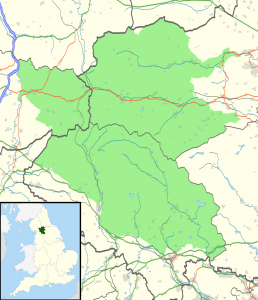Fossils of the Yorkshire Dales

DISCLAIMER: The resources below were for a 2013 class at the Centre for Lifelong Learning at the University of York, and most of the links no longer work!
A colour pdf of the notes from the class can be downloaded here: 2013_YorksDales_colour.
Below are a selection of links relevant to Yorkshire Dales geology and fossils…
General geo-info
To start with, if you want a copy of the latest (2013) geological time scale, click here. And if you want to get a copy of the British Geological Survey poster, Climate Through Time, click here.
The British Geological Survey (BGS) provides an interactive geological map of Britain, which enables you to find out what rocks are where. The survey also provides a lexicon to explain the names of the different rock units.
Yorkshire Dales geology and fossils
The North Yorkshire Geodiversity Project has produced a website called Your Dales Rocks, providing information on all sorts of geological aspects of the Dales.
An electronic copy of the geological map of the Dales can be downloaded here: FYD2013_YorksDales_gcl_map
An electronic copy of the geological map of Cracoe can be downloaded here: FYD2013_Cracoe_gcl_map1
A paper by Bond (1949) on the limestones of Cracoe can be read here: FYD2013_Bond1949_Cracoe_limestones, whilst a short summary of the reef knoll SSSI at Swinden Quarry can be downloaded here.
A number of files and links providing information on the geology of the Malham area can be found on the National Park website here. The Field Studies Council (FSC) also provides an electronic guide to Malham geology.
Details of a Cotterdale (Wensleydale) walk on which you might find fossilized ‘Stigmaria‘ roots can be found on the Dalesman website here.
The Craven & Pendle Geological Society provides plenty of useful information on Carboniferous fossils, including a short guide to the ammonoids of Stonehead Beck, Cowling, North Yorkshire.
Crinoid-rich ‘Swaledale stone’ has been quarried for centuries. Some nice images can be seen on the Britannicus Stone website here.
A brief summary of the 1883 paper by James W. Davis, describing the fossil fish found by William Horne in the ‘Red Bed’ limestones of Leyburn can be read here.
Life in the Carboniferous
The excellent Biology of Sharks and Rays website explains here how the Carboniferous was a golden age of (often very weird-looking) sharks.
There is also a good guide to extinct Carboniferous ‘sharks’ on the Bristol University website here.
The Carboniferous coal swamps are well-explained by Ben Slater on the Palaeocast website here.
1 Response
Leave a Reply
You must be logged in to post a comment.



Great links, Thanks.